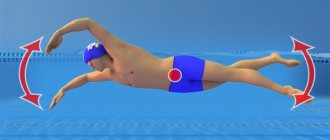Are you a boxing fan? Is your dream to become like the stars of the ring? Do you think that training a boxer at home is not serious, and it is impossible to achieve any success here?
Yes, indeed, at home there is no ring, no ropes, and other equipment. There is no coach or sparring partners.
But independent training of boxers is possible even in such conditions. If you put in serious effort, the results can be very, very decent. You will get in good shape and become a real fighter. What exactly is required for this?
Interview with a boxing trainer
Can other sports be compatible with boxing?
Boxing, like any aggressive sport, helps develop muscles at an accelerated pace, so it is best to combine this sport with athletics, gymnastics and other strength exercises for stretching and muscle development.
Boxing can also be combined with other serious types of martial arts, but does the student have enough strength for all these activities? I think it's better to take one type seriously and do it with additional muscle strengthening.
Are boxing students registered with any government agencies?
Boxing is a serious sport and all students a priori have better physical fitness than people who do not play sports. There are no rules or laws about submitting data about students, but everyone who comes to practice should understand that sport is not an opportunity to feel stronger than others on the street, but an opportunity for self-defense and protection.
Is it possible to drink alcohol while practicing boxing?
No one can prohibit drinking alcohol, but sport involves building muscles that will work for human health. Any alcohol destroys fatty tissue, from which muscles are built during sports and effort. Therefore, everyone decides for themselves whether to drink alcohol or not.
How are pairs selected for training? Newbies with experienced people or newbies with newbies?
Well, if you put a newbie in a fight with an experienced one, then the newbie will have a hard time. No, pairs are always matched by strength, with a slight advantage, so each student follows stronger opponents, and those who are stronger simply practice blows.
During training lessons, the lesson or round may be stopped and the correct strokes or errors are sorted out, which happens more often. Young men often begin to feel strength in their arms and legs ahead of time and move away from practicing the technique, going into simple hammering.
Some quit prematurely without mastering boxing techniques. All pairs are thought through very professionally.
Can girls do boxing?
What's the difference? Gender does not play a role in this sport.
Chapter:
Have you decided to take up boxing for the first time, and are you looking for information about exercises that will help you take this difficult but interesting path? This article will guide you through a simple, basic boxing training program for beginners. But don’t think that the exercises presented here are only for beginners. Every experienced boxer uses them when working on his physical endurance, speed, and technique. Below is an example of a simple but effective training program.
So, let's begin.
Jumping rope (2-3 rounds)
Thanks to jumping rope, the whole body warms up, which significantly reduces the risk of injury. The exercise also helps increase endurance and solve problems with excess weight (if any).
When jumping rope, you need to monitor your breathing and ensure that your body remains relaxed. If your physical fitness allows, you can skip the first minute break.
Stretching (1-2 rounds)
The muscles of the arms, legs and back are stretched. These exercises reduce the risk of injury. It also helps increase blood flow and increase the athlete's range of motion.
Shadowboxing (3 rounds)
A basic boxing exercise designed to practice and consolidate the necessary mechanics of movements. Shadowboxing allows you to hone your attacking and defensive actions. For beginners, it is recommended to practice rounds according to the instructions. For example: straight forward strikes, side strikes after diving, retreat strikes, etc.
Work on a pear or bag (3 rounds)
These exercises are designed to develop speed, strength, coordination and accuracy. It is worth starting with slow straight strikes, gradually increasing speed. Afterwards, move on to combining direct and side blows. At the same time, it is important to keep the rhythm and remember to breathe.
Final stage: General physical training (20-30 minutes)
Here you can pay attention to the press and work with a barbell, expanders, and dumbbells.
Boxing stances
Learn and remember several starting positions (there are three in total) from which you will perform the exercises.
- Front stance (abbreviated as FS) is a position in which the legs are placed shoulder-width apart with knees slightly bent, hands with clenched fists are held near the chest.
- Your stance (or SS) is one in which the weakest leg is put forward, the one of the arms, which is also less strong, moves forward (its task is to cover the jaw), while we hold the other at chest level. Most often, for right-handers this is the left arm and leg, for left-handers, respectively, the right;
- In the opposite stance (denoted as PS), we push our strong arm and leg forward.
Exercises for children
No one doubts the fact that physiologically a child’s body is fundamentally different from an adult’s, and is by no means a smaller copy of it. And this is important to take into account in all areas of his activity: mental, emotional, physical.
And playing sports is no exception, especially when it comes to a form of martial arts such as boxing. Due to the above reasons, the organization of the training process in the children's boxing section will differ from the training of adult boxers.
In childhood, the main attention in the training process should be paid to the general physical preparation (GPP) of the child. Special exercises will help the formation of a strong muscle corset, stretching, posture, development of reaction, speed, agility, coordination of movements, endurance. The main emphasis is on exercises such as push-ups, abdominal swings, squats, and running. It is very important that, in addition to the physical preparation of the young athlete, work is carried out in parallel on the emotional preparation, moral and volitional development of the child.
For children aged 4-6 years, the training duration should not exceed 40 minutes. A game form of training is preferable, aimed at developing physical fitness, as well as teaching discipline, teamwork, and fulfilling the coach’s tasks. There is also a study of some basic boxing elements in front of a mirror.
For children aged 7-10 years, the duration of classes increases to 60 minutes. The main emphasis is still on general physical training, while more attention is being paid to studying the basics of boxing. Playful and competitive forms of training are effective.
Children work individually, in pairs, and in teams, studying and practicing stances, defense, strikes, and movements.
At the age of 11, children move to the youth group, which is usually divided into junior, middle and senior groups, where a full study of boxing school begins. And although you can start boxing from scratch at any age, those who have been trained in children's groups are usually more prepared for the stress that they will face in the future.
A simple basic boxing training program for beginner boxers. The same training is carried out by experienced world-class amateur and professional boxers.
A basic boxing training program doesn't have to be fancy or full of incredibly difficult exercises. It's usually simple, boring, and focused on perfecting the basics over and over again. If you are goal-oriented and open to learning new things, this boxing training program will take you far.
2-3 Rounds on Jump Rope
- Jumping rope warms up your body. Reduce the chances of injury and increase performance.
- Work on breathing and staying relaxed.
- Don't rest during the minute break. Let him pass.
- You can replace the jump rope by running for the same amount of time.
1-2 Rounds of Stretching
- Reduces the possibility of injury, increases blood flow, and increases range of motion.
- Stretching your arms, legs and back.
- Relax your muscles to prepare them for intense work.
3 Rounds on Paws
- Work on offensive techniques and defensive techniques.
- Focus on speed and accuracy, not strength.
3 Rounds on the Bag or 3 Rounds of Sparring
- Practice the defensive techniques you learned while working on the mitts (bag or sparring).
- Make sure you keep your guard in place and move (in the bag or sparring).
- Feel free to hit hard, but don't get careless (in the bag or in sparring).
2 Rounds on Pneumobag
- Be persistent and try not to take too many breaks.
- Don't forget to breathe.
2 Rounds on Double End Pear
- Move around her and throw small punches to improve your accuracy.
- Do this with your gloves on, so you'll get used to hitting fast targets with your gloves on.
1-2 rounds of stretching/cooling
- Relax and stretch.
- Feel free to chat with other boxers about the techniques you learned that day.
Final Thoughts
This is a simple basic boxing training program. Once you get the hang of it, you can try other crazy programs to improve your fitness, tailored to specific aspects of boxing. For new boxers, I recommend not going beyond this program or trying to add additional training to speed up your progress. Save your remaining energy and motivation for next week. Every week gets harder and it is very important not to burn out. If you're still a beginner, make sure you take things gradually and without rushing!
Boxing is one of the most spectacular sports. Bets in betting sometimes reach several million dollars, which is probably why it is considered the most corrupt sport. But for the show to be spectacular, boxers’ training plays a very important part in it. Not to mention the fact that the outcome of the fight, the popularity of the boxer, his position in the standings and, of course, the prize money depend on this.
Training
It’s probably no secret that a boxer’s strength training takes up more than 90% of his time in the gym. This is due to the fact that without sufficient physical preparation there cannot be both sharpness and speed of impact. It is also worth noting that during strength training, boxing endurance also increases, which is necessary so that during the entire time allotted for the fight, the athlete has the opportunity to carry it out tightly, combining it with quick and easy movements around the ring.
As for the athlete’s muscles, they become relevant during completely different actions. Thus, the legs, back, deltoids, arm extensors, and pectoral muscles develop during normal training, but in order to meet modern strength training requirements, the athlete needs to use special exercises.
Classification of exercises
Naturally, strength training for a boxer implies the systematization that is accepted in boxing and is based on competitive ones. These are called special, and they take place in pairs, often wearing gloves.
As for other exercises that are considered common to all sports, these are designated as general developmental.
All the rest, which do not fall under either the first or the second category, are called special preparatory. They include simulation exercises both in pairs and singles, hitting projectiles and others.
There is also a separate group that prepares the athlete for more complex exercises. They themselves are quite simple, but their structure is similar to those for which the athlete is subsequently prepared.
As for the athlete, it is worth noting that even the same exercises, which differ in the method of their implementation, can be used in order to develop different qualities that will be necessary for a boxer.
About the advantages of homework
If this is basically what you need, then home exercises are the best choice, because there are no disadvantages of the gym, and there are many advantages. Which ones?
First of all, you do not have an average training plan for boxers, you are training according to an individual program. That is, the one that best suits your body in terms of load and purely psychologically for you as an individual.
The start and end time of training is at your discretion.
There are no dangerous blows to the head or other vital places, which in no way add to your health. That is, the inevitable harm to the body in boxing is reduced to nothing, and the exercises are only beneficial.
But is it possible to train in a small room, and what should you do with equipment in this case?
Methodology
The fact is that even classic boxer training has always been based on high repetitions and working with light weights. This not only trains muscle endurance, but also does not affect muscle growth, because an athlete only needs strength qualities and speed.
This is how muscular endurance is developed, thanks to jumping rope, running, etc. Directly in the gym itself, you need to focus on working with heavier weights.
It is because of this that boxers train at the highest possible speeds and with intense intensity. Thanks to this, productivity also increases.
And it's all?
If you work out exclusively for yourself, you don’t really need anything else.
Such “bells and whistles” as a helmet, mouth guard, dynamic bag, paws, etc. can easily be classified as superfluous.
It’s great when the apartment has at least a basic horizontal bar, not to mention a set with a bench, wall bars and parallel bars. But, in general, there is no urgent need for all this.
Dress and put on the most ordinary items of sports clothing - as for any workout.
Special boxing training
The specificity of this sport is such that it mainly involves training according to an individual plan, but one should not forget about general training. As for the first, there are mainly exercises in pairs, practicing punches, shadowboxing, coordination of movement during defense and attack, work on boxing equipment, etc. Moreover, the special training of an athlete can be divided into two parts: the first is a kind of foundation , in order to maximally develop motor functions, on which the main boxing part is based. Moreover, the better the first level of training is worked out, the more firmly the second level will be mastered. So, don't underestimate physical fitness, just like core fitness. The best would be an ideal combination of both the first and second under the supervision of an experienced trainer.
How to hit a punching bag correctly
Before you start, take a short break to rest for five or ten minutes. During this time, you can take a leisurely stroll around your home gym. Then we put on gloves and approach the pear.
The rules for fighting a punching bag are as follows:
- We take our stance (SS) as the starting position.
- The blows should be alternated: a straight left alternates with an uppercut, a straight right alternates with a side blow.
- Don't stop at individual blows, move on to entire series and combinations.
- Try to hit the center of the projectile.
- The speed, as well as the force of impact, should be increased little by little, without sudden jerks.
- By getting into a fast rhythm and striking with virtually no pauses, you will provide yourself, in addition to improving your technique, with a good cardio load.
Underestimation
Underestimating boxing training and developing only one side inevitably leads to one-sided development and rather low and unstable sports performance. If you turn only to it, you will not have enough striking and technical base, which will not be enough to perform adequately in the ring. But, on the other hand, if you devote time only to special preparation, without having a suitable general foundation under your feet, then victory is unlikely to be achieved, especially in a fight with an opponent who has taken this mistake into account.
Boxer training at home
Many people wonder whether it is possible to engage in sports activities as an amateur or semi-professionally, using improvised means rather than professional equipment in gyms. Naturally, this option is not only considered, but remains preferable for those people who cannot afford a full-fledged one. Below are some exercises that professional boxers perform without having any additional equipment at hand:
- Push-ups from the floor (preferably with clapping).
- The so-called “shadow boxing” (if possible with weights on the legs and arms).
- Cross country running.
- Jumping in place while pushing the bar away from the chest (you can even use a mop).
- Hold the same object on your shoulders behind your head and perform rotational movements.
- Bicycle (if possible).
- Uppercut training with weights.
- Jumping on one leg over a bench or ledge and in length.
- Impacts in a pool (optionally a river, lake, pond).
- Practicing punches on your knees and in a sitting position, then jumping.
- Exercises on the horizontal bar.
- Lifting the body.
- If possible, climb by rope.
- Running up the stairs.
- Jumping rope.
Thus, you can complete a full course of exercises, which will give the same result as training a boxer in the gym. There would be a desire.
Let's warm up
Training for a novice boxer is impossible without a good warm-up. We begin to slowly walk around our home gym - our own room, simultaneously moving and rotating our heads. The goal is to stretch the neck muscles. Then the pace speeds up a little, we move our arms in different directions, and turn our body. We walk for about three minutes in the so-called “duck walk” with simultaneous rotations of the wrists and hands to warm up. Then we walk in place, raising our knees as high as possible.
After warming up, you need to stretch the muscles, for which you need to do exercises for each group of them, and don’t forget about the spine. He should also get his share of stretching movements, since the program necessarily includes back training.
Having warmed up, we move directly to boxing classes. Kilogram dumbbells are not yet recommended for beginners; they should be picked up after the first two or three months of training.
Professional training
Using the example of Jr.), one of the best athletes of our time, who does not have a single defeat to his credit, you can analyze in detail one day in the gym and understand how difficult and varied the boxers’ training program is. The exercise plan is created in such a way that the athlete can move to a whole new level:
- Sparring. Many boxers start with hard physical training and then go to the ring. For Floyd, everything is different: first a light warm-up, then sparring with 4 partners for 10 minutes each.
- Speed bag and paws. Next comes practicing strikes and working with a coach. On average, he delivers 800 blows in 7 minutes.
- Cross. Jogging is a necessary attribute. You need to run 8 km at least 3 times a week.
- Working with a heavy bag. Practicing a strong blow for 30-40 minutes.
- Other physical activities that involve playing basketball or training with your eyes closed.
Individual parts
When training independently, it is better to start with strikes from the SS position, then move on to the PS. But if you are comfortable with a different sequence, be guided by your individual preferences. Sports activities should bring muscular joy.
How much time to devote to training with a punching bag is up to you. The body itself will tell you when it’s time to stop exercising. The appearance of slight fatigue is a must as a signal of a job well done. But severe overvoltage should not be allowed.
If the bag swings too much under your blows, then it’s time to replace it with a heavier one.
End of training
If everything is clear with conducting classes in the hall, then do not forget that under no circumstances should you stop abruptly. Boxers' training never ends suddenly. Professionals work hard and even after the main program add a few more exercises, after which the weight and intensity gradually decrease. An amateur can finish the exercises with stretching.
It also happens that it is not possible to visit the gym, but there is a great desire and willpower to practice boxing. It’s unlikely that anyone can replace a real trainer, but boxing lessons for beginners at home can quite help. For full-fledged training, you will have to buy everything you need: a punching bag, gloves, dumbbells, a barbell. After this, you can begin to master the main rules.
How long to train?
Beginners should start with just a couple of approaches, no more, after three months you can add another one. The optimal number of repetitions is from six to ten. But if this load is not enough, and you don’t have heavier dumbbells, you can do more.
The transition to performing strength exercises should be done only after properly restoring strength after a fight with a punching bag. The rest should last at least a quarter of an hour.
It is important to complete the workout correctly - walking at an extremely slow pace with slight shaking of the arms, which promotes general relaxation, is suitable as its end.
By following these simple recommendations, you can achieve very decent physical shape and become a real king of your small home ring.
Boxing classes without leaving home
A boxing lesson for a beginning athlete should begin with a warm-up. This will help avoid injury and prepare your muscles for stress. It’s very good if you have the opportunity to go for a run close to home. In winter, you can do without this by resorting to physical exercise.
Fist push-ups. It is better for a novice boxer to play it safe and put a mat under his hands. After several training sessions, your fists become harder and you can do without it. This type of push-up will help strengthen your triceps and wrist joints for a powerful punch. For greater efficiency, do 3-5 approaches of 20 times with breaks of five minutes. We must strive to ensure that this number of approaches is completed without much difficulty.
Jumping rope. Many boxers neglect jumping rope, and in vain. By performing this exercise for 20 minutes before each workout, the athlete becomes much faster and more dynamic than the opponent. In boxing, strong legs and calf muscles are important. You can and should jump in different ways: low, high, on one or two legs, move around the room back, forward, in a circle.
Squats. Perform five sets of 50 reps. You can also squat with a barbell, if you have one. To do this, you need to place it just below the neck to avoid injury and greater weight pull. Keeping your back straight, place your heels under your shoulders, turning your feet slightly. The main thing is to look in front of you, otherwise, if you lower your eyes, your neck will also droop.
A fight with a shadow. It is necessary to learn how to practice strikes and defense with a non-existent opponent, as they say - to hit in the air. This is necessary so that your hands do not get tired during a real fight if there is a miss. You can practice both single and serial strikes to gain improvisation skills during an attack.
Changing the striking technique
- Learn to relax. It sounds trivial, but relaxation plays the most important role here. You need to be able to relax. It's more of a mental attitude than a physical state. You should feel comfortable. Think about how to feel comfortable in any situation. Nobody said boxing was an easy sport.
Everyone gets rid of stress in their own way. Someone says to themselves: “Relax.” Someone needs help from a coach. Some people learn to relax by gaining boxing experience and participating in many fights. The truth is that not everyone is willing to put in the effort. Such people cannot be condemned. It's hard to feel comfortable when you get punched in the face. It is unlikely that such people even exist.
To relax, try to appear relaxed. In other words, when you are training on a punching bag or practicing shadow boxing, try to make the observer see you as completely relaxed. It's hard to believe how many boxers throw "relaxed" punches to the bag that look very exhausting. Of course, they can only work at fifty percent, but this percentage is not relaxed, so fatigue will still accumulate.
One of the most common mistakes that inexperienced athletes make is holding their hands motionless, which leads to rapid exhaustion. Even worse, beginners hold their own hands in the most exhausting position. They hold their gloves near their faces and place their elbows out to the sides. They also clench their fists tightly. This leads to fatigue of all arm muscles. As a result, the gloves appear much heavier to a beginner than they actually are.
The first thing to do is to move your elbows down and turn your gloves with your palms facing your cheeks. The backs of the hands should be turned slightly diagonally to the sides, and not look directly at the opponent. This will help relax the shoulder muscles, because they will not need to hold your arms in the wrong position.
Let your own hands breathe. Make them seem like they are circling in the air. Look at your chest as it rises and falls as you breathe. You don't make a conscious effort to do this. Let your hands work in the same way. Do not keep them in a constant position, this will lead to rapid exhaustion.
- Whiplash. How you make your shots depends greatly on how quickly your arms fatigue. Throwing punches is perhaps the most exhausting thing that happens in the boxing ring. You will increase the efficiency of using your own energy if you hone your hitting skills.
- Throw out your elbows, not your fists. When you think about throwing punches, imagine your elbows extending for straight punches. Imagine swinging your elbows as you throw loop punches. This will ensure that the blows remain dense and compact and create a connection with the body. If you think about how your fists are thrown forward, you will need to expend more effort in throwing the punch.
Basic punches in boxing
As in any sport, first you need to master the basic strikes and techniques. They will become the basis for learning more complex techniques. It is quite difficult to understand boxing for a beginner. Video lessons clearly help you understand the subtlety and correctness of the movements. At home, you can practice them on a pear.
- Jab. Not the strongest blow, but very important. When striking, the arm is fully straightened, and the fist is held in a horizontal position, palm down.
- Cross. A direct blow used by boxers to knock out an opponent. The weight of the body must be transferred to the left leg, turning the body and striking. To protect from the enemy, the face is covered with the right shoulder, the left fist covers the lower part of the face, and the left elbow is pressed to the body.
- Hook. A powerful knockout blow that is delivered in a curved trajectory resembling a hook. Experienced boxers apply it with lightning speed, which unbalances the opponent.
The first Muay Thai lesson teaches the lead punch. It is applied during an enemy attack, with a direct blow with a deflection. Beginners do not succeed in such manipulations right away; first they need to bring all actions to automaticity.
So that all your work does not go to waste, you need to take care of protection. Even the strongest boxer, without knowing how to defend himself, will very soon be knocked out. Therefore, well-executed defensive blocks can bring victory in Muay Thai.
- Keep your eyes open when your opponent throws a punch. Although this is quite difficult for a beginner, it is the most important moment of the battle.
- Bend your neck slightly forward to protect your eyes with your eyebrow bones. Tilt will help control your opponent's movements.
- Maintain calm and composure. During a fight, professionals use a “mask of anger” - a grin. This gives a psychological advantage over the enemy.
- Don't do too many movements (boxing dance takes a lot of energy) and don't give up. Stepping back is also not the best approach to combat. Avoid this bad habit by fighting in the corner, when there is nowhere to go back.
- Return to the starting, fighting position after a strike. And also quickly move on to attack after defensive techniques.
- Reflect your opponent's blows, blocking with different hands to protect your head. And, of course, do not turn your back to the enemy, otherwise he can easily pierce the spine and neck.
At home, it is better to study all boxing lessons via video. Because only by watching a professional can you learn the correct technique. Hard work will do its job, even if it is not possible to attend training.









